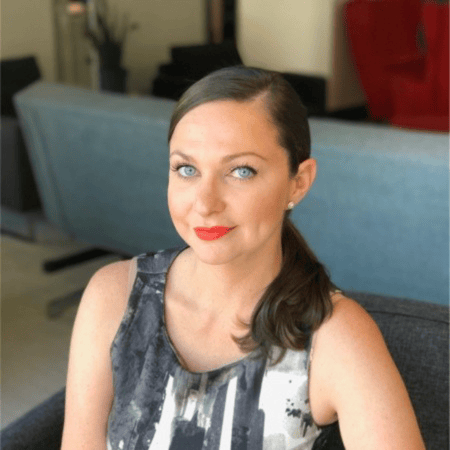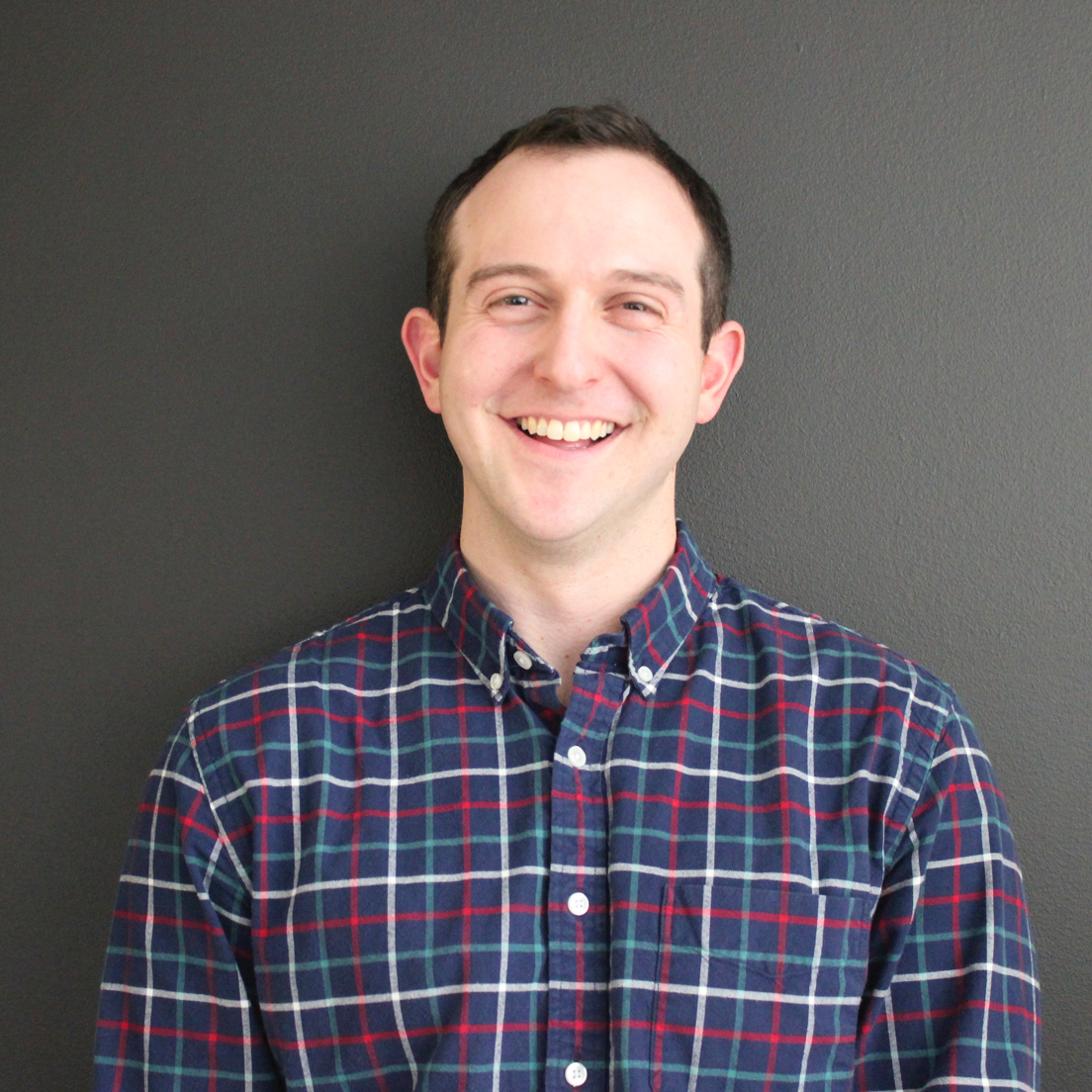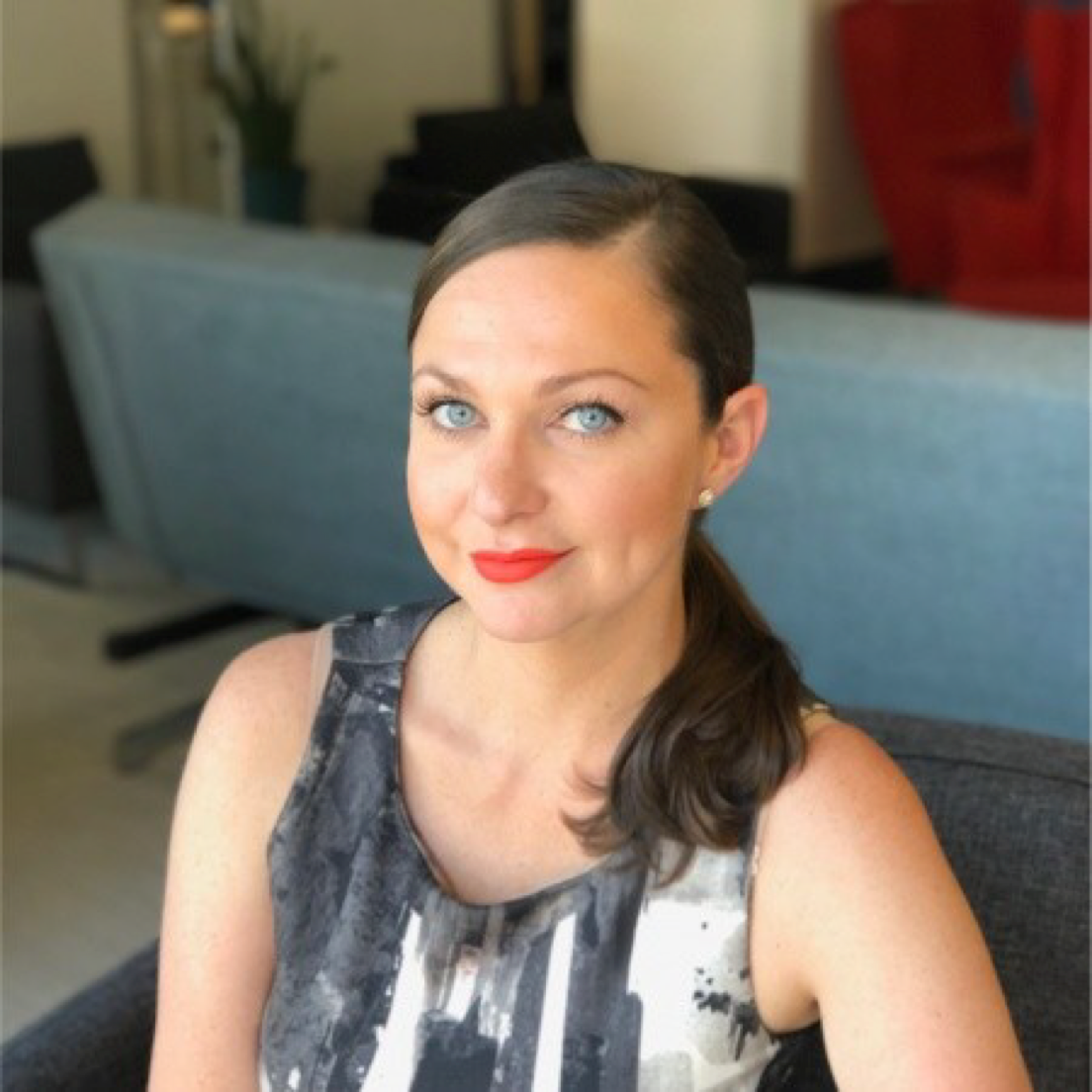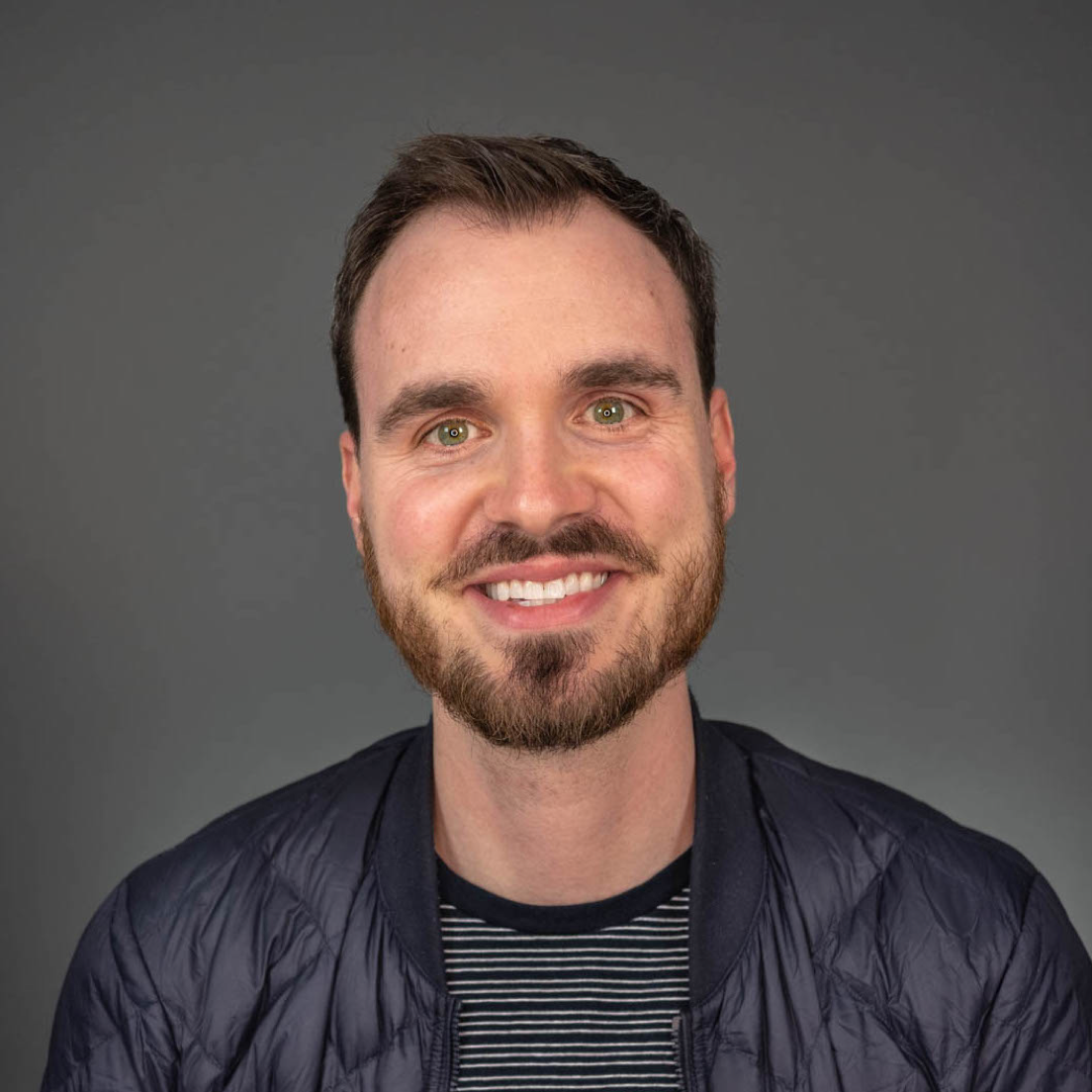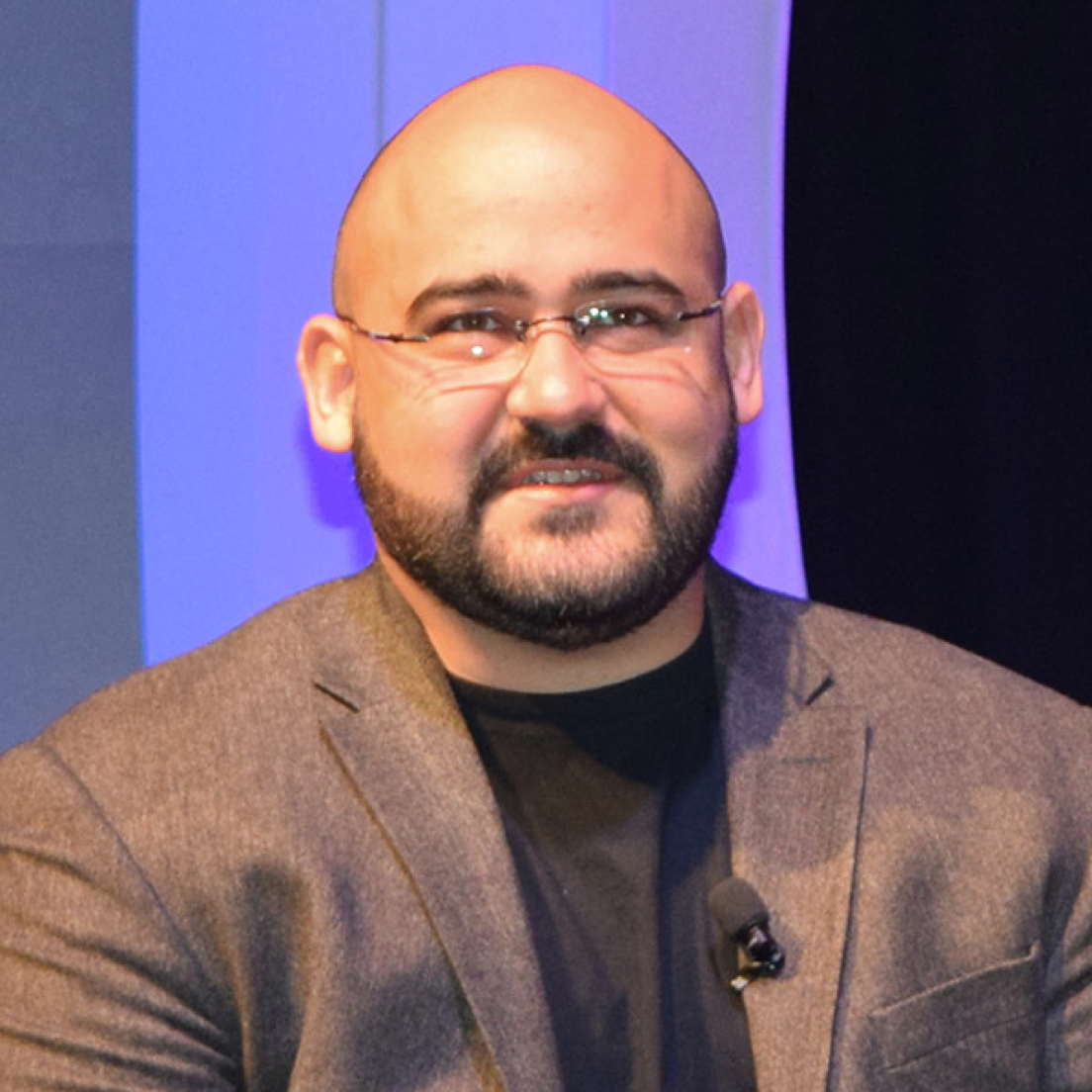About the episode
Jackie Davis has led digital marketing for some of B2B tech's fastest-growing companies such as New Relic and Atlassian. Today, she's the Senior Marketing Manager at HelloSign, the world's leading eSignature platform.
She sat down with host Matthew Kammerer to share her secrets for sparking wild, predictable growth through digital marketing. Get details on scaling up channels, adjusting marketing strategies after a company goes public, and how content marketing programs such as HelloSign’s Digital Strength course fit into growth marketing goals.
You can connect with Jackie Davis on LinkedIn.
Don’t have 30 minutes to spare? Jump ahead to key sections outlined below, or keep scrolling for a full transcript of the episode.
- [00:54] What unique challenges do B2B marketers face?
- [03:06] How does digital marketing change post-IPO?
- [07:22] How do you build a marketing stack and strategy from scratch?
- [13:41] Which non-traditional marketing channels work well for B2B?
- [14:27] How do you get buy-in for new marketing channels?
- [15:31] What should marketers do if they miss growth goals?
- [19:07] What is the role of content marketing in a growth-focused company?
- [23:31] How do you advertise content vs product marketing?
"My job as a marketer is to find the right people and make them better at their job. But how do you go one step up? You just give them this education and don't ask for anything. We're building trust and building ourselves as thought leaders."
Episode is brought to you by
-

Matthew Kammerer
Show Host -

Vanessa King
Producer -

Joshua Schnell
Producer
Show Transcript
Matthew Kammerer: Your career has focused on B2B tech. What challenges do you think marketers face in the industry that others don't?
Jackie Davis: There's a couple of things but one big one, and I think this is especially important when you're first starting a career in B2B, is that most of all the marketing materials, so there's so many blogs and articles and Medium things and best practices about marketing, but the majority of it has been created for B2C. The tactics that you use in B2C are not the same tactics that you use in B2B.
Like in B2C, it's an emotional buying process. You're telling someone, here's why you want this. It's impulse driven and that's all you have. You have no one to answer to but yourself for whatever this purchase was.
Whereas in B2B your career's on the line in some cases and there's another step of logic. So you're like, "Oh I want this thing. It's going to solve this for me." But then there's also like, ok now how do I put the business case together to get it. It's a lot more logical. So the preparation that you need is much deeper.
Personally, I love working in B2B, especially B2B tech, because the margins that we have are amazing and so I always tell people when people start to panic. I'm like, "Guys. We have like the best margins. We get to have fun at work all the time and no one's lives are on the line. And we get paid well, so everyone just take a breath. It's software." Not that it's not important, but just a really lucky place to work.
But yeah, the level of enablement you need from the B2B standpoint is totally different because you need to look at different personas that go through the buying process as well as that people aren't making an impulse purchase. They're not seeing an ad on Instagram and then clicking through and then purchasing. It is a lot of research. They typically come to your site between 5 and 10 times depending, and that's just on average. When you go into the enterprise, it's much heavier and from much more personas, but let's just say 5 to 10 times.
Then there's the matter of tracking that and you get into attribution. So like, what's the right way to do that? I think it's all about just getting it directional so that you can make management decisions, but it's never going to be perfect ever. As well as, looking at all the different personas. So if you think about the complexity there, it's a lot.
Matthew: I want to talk to you about your time at New Relic and Atlassian, two companies that went public a few months after you started. How does going public affect the role of an online marketing manager?
Jackie: As an online marketing manager, typically you're going to have one of the largest budgets in the company. So there's a lot of responsibility with that. But when you're in that growth phase getting up to it, there isn't always the rigor around accountability. As long as you hit the number and you spent the budget and didn't crash anything, then you're good.
But when you're going into an IPO phase, typically companies are going to hire a CFO and that CFO is going to come on and start really building the financial rigor that you need in order to take the company public. So you'll feel that process start to come down. Now all of a sudden it's like, oh these things that I used to be able to just make decisions on and just put out there and if anything failed it's not a big deal because no one notices as long as somehow you hit the goal. All of a sudden everything has to be accounted for, which is a different amount of pressure. Some people I've worked with were not used to that and so that was a big change for them. They feel like they're being micromanaged when really it's not that, it's just there has to be a different level of financial responsibility.
Matthew: The way that you're measured pre and post IPO and the expectations for management. How do those change?
Jackie: It changes in a way where the focus is more around predictability and less around just raw, wild growth. So it's going to be, what are the things we're going to do going into a quarter planning or year planning. What are the things we're going to do? What are the assumptions? How much? And then did you execute on those things?
Versus in more of the startup world where if you get big growth, they don't really care how you do it. So it's more about being predictable than just wild market capture.
Matthew: Which one do you prefer?
Jackie: Wild market capture for sure. All day. It's way more fun. It's still fun to have that structure and have everything kind of just tinkering away. But for me, I love the build phase. And so by the time it's fully operationalized and you're just punching in numbers and then adjusting stuff in the ad platforms, it's like, okay anyone could do this. You can hand that off.
So that's kind of where I've found my sweet spot like here at HelloSign. I'm just loving being able to build everything and experiment and try things and get big results and iterate on it. It's more about just getting shit done, to be frank, than about getting the shit that you said you were going to get done, done.
Matthew: Are there things you would do differently having gone through it two times?
Jackie: Get there earlier. That's about it. It's fun. It's super fun. And you should just enjoy it if you get that opportunity, but also I would say that shouldn't be the endgame. There's a ton of fun to be had and money to be made outside of IPOs. So, I think a lot of people get a little hung up on that but it's not the end-all be-all.
Matthew: So, is it easier or better to build towards a predictable scale in the beginning or is it better to just cross the bridge when you get there?
Jackie: It's going to be hard no matter what to build for that scale and to build the rigor and also build the team and the practices of it. It's just a different management style. So, that takes time but I've seen it happen where if you wait too long, it just never gets prioritized and then the more accountability you have, the less time you have to just stop and fix everything. And the bigger you are, the bigger that fix is going to be.
So for me, it's been really important for us to keep one hand spinning on one plate, but then with the other hand build all this stuff and get that structure ready. Honestly to get it really, really right it takes a year to two years.
Matthew: When you join a company that doesn't have marketing tech set up, what are your first steps?
Jackie: The first thing is you really have to go and take whatever data is available. You have to just dump that database and analyze where everything is and how everything's being tracked.
And then from there, it's great when you have a system of record. So, there should be something somewhere that is the truth teller. And then you use your web platforms and conversion events and Google Analytics and all that good stuff to just be like your directional measurement.
But if you need to go and see what's the truth-truth, there should be some database. For us, there wasn't because there was two systems, but that is the goal. You need to build one single system of record where everything is and that is the ultimate truth and then have reporting and everything coming out of there.
Matthew: That makes sense. So, when you're planning a media campaign or buy, what's your process for picking channels?
Jackie: Again, it goes back to having all that data and knowing what's coming in from where. So starting with an awesome data structure and having great naming conventions for your UTMs and really roping off what those channels are upfront is super important.
I always start with paid search. You want to go after the in-market demand first. They could people who are already looking for a solution. Just get in front of them. And that's something that you build out and just kind of set it and forget it and maintain.
Then on top of that, it's all about using your best guess as far as placements that your audience is going to be at. So making sure it's really aligned.
For me, what I always do is just get my paid search like rocking super hard so that it gives me that kind of buffer room for experimentation. And then just throw a bunch of stuff out there and then see what comes back and then you have your historical cost per acquisition. Like, what is driving the highest quality of leads and all the stuff and then you just max out those channels. So start at the bottom up from best-performing to worst. You say, okay. Here's my budget. How much can I spend in this channel or how much inventory is available on that site? Then just work backwards from best-performing up, with the best performing getting the most budget that is still going to drive efficient growth.
Then just constantly doing that and just experimenting, trying new things. Then as you test new things at some point your old worst but still okay performing stuff just gets retired.
Matthew: After paid search, what's next?
Jackie: Depends on how much traffic you have. So if you have a ton of traffic, retargeting is a huge one.
At Atlassian, one of my first initiatives that I took on there was really expanding paid search. The opportunity that we were missing there was pretty substantial. So that gave me a lot of room to go and rebuild other things. We had a micro site and then the product pages. The microsite was related to Git and then there was product pages that take you through the buying process for BitBucket. They were retargeting visitors who had visited the product pages and then showing them Git microsite ads. I was like, "Um, that is not quite the buying cycle that we want.” But there's this micro site that has a ton of organic traffic. Let's take that organic traffic and then send them down the sales funnel. So taking them there and then showing them an ad about the product. Once they had seen the product but maybe not seen the sign up page, then the next kind of ad would be around getting them to sign up and taking them through that buying cycle.
So once that's set up you can kind of just set it and forget it and then you have the channels and the campaigns built out and you can update your creative. But everything's kind of running.
From there, go into prospecting. Facebook is a great place. Or what I do with you, and you're the person I work with the most but it's not an advertisement, it's just that a company like BuySellAds that does this really boutique kind of service where they go to all these smaller publishers that have a great following and really dedicated audience, but then they kind of build that into a network versus spending all your money on CIO or all your money on StackOverflow or whatever it is. It's like there's a bunch of different really unique placements. So that's my favorite kind of prospecting. That's the most meaningful I feel.
Then of course you can do Google Display Network and stuff in LinkedIn, especially if you're in the enterprise. LinkedIn has awesome ABM capabilities as well as the ways you're able to advertise like with InMail and stuff. It's unique but it's much more expensive and you really have to be going after enterprise-level acquisitions for the cost to make sense.
Matthew: Do you have one secret tip for LinkedIn buying? There are a lot of ways that you can buy across LinkedIn, but do you have one buying method that has shown a better result than any other?
Jackie: Not really. I mean because we're doing ABM and we just started like a couple of months ago, and the buying cycle is just much longer and the reach is smaller.
The number one tip would be to integrate it into your marketing automation system. Most of the LinkedIn traffic is mobile. And so you don't want to take them out of what they're doing and take them to your site and have most likely an unoptimized mobile experience.
So if you use their integrated forms where the prospect sees the offer and then can enter their information right there and get in. I think it's a much better experience for the user and then also increases your conversion rates.
Matthew: What kind of information do you want to capture on those forms?
Jackie: We have ClearBit running through, we use their API. And so as soon as somebody gets into our database, if they have a private company domain then all the information gets appended in the database. But other than that, it's like first name, last name, work email. For us, typically company size and role is important. But I try keeping it as minimal as possible.
And then on our site having a phone number is really important on the sales contacts form because sales have found that their success rate with getting in touch is demonstrably higher when they have an accurate phone number to call in to.
Matthew: Are there any marketing channels that you're a fan of that are less common in the B2B space?
Jackie: I feel like sponsored content would be the one for sure. I've just started really getting heavy into that this year, and it's been absolutely mind-blowing. We have some of these placements that we've done like Pocket News. I don't want to give away all my secrets, but there are some of these native things where as long as you take the time to really make it meaningful for the users, you can drive over a thousand leads in one day, which is insane.
Like the first time we did it, I thought something broke.
Matthew: How do you get buy-in from your internal team on something that's so new like that?
Jackie: Any time you start at a new company, you need to look for your low-hanging fruit first. You need to like establish yourself, and so don't go after experimental things when you're new. Establish yourself as a trusted person.
Like my executives, they don't really ask. The conversation is doing more of what works and a few new things because I've delivered every single time. So I try to keep them out of what it is and just what it's going to get us. It kind of changes the conversation and allows you to spend more time on working down the funnel once the leads are in vs. having to convince somebody of the kind of buy.
And you also have to just make sure everyone knows that you're an expert and that you want to be trusted. I think that's super important.
Matthew: So imagine yourself five years ago. You had a quarter where you didn't quite hit those numbers that you're expected to hit. Not that you've ever done this before but if you didn't hit the numbers, how would you still maintain credibility with your internal team and still continue to keep that trust?
Jackie: I think it's about constant communication. Before you go into it, you show them: here's the assumptions that I made based on historical data, here's a plan I'm presenting. Give feedback and be willing to move on some stuff if your leaders want to not try something new or whatever. Just get buy-in little by little.
But yeah, if you're not hitting numbers communicate it early. Like hey, here's how we're pacing, here's what the underperforming thing is, and also I'm going to try more of this or more of this, but here's why. If everyone feels in the loop and it's understood why and there's a plan to do it differently going forward, it's fine.
You're never going to always hit all of your numbers. It's impossible. There's too many assumptions. Too many variables—seasonality, all sorts of different stuff. You're not always going to hit them, and if you're hitting everything 100% that means you're definitely not trying enough stuff and you have to be always experimenting.
Matthew: Have you ever taken a risk on a media buy that paid off?
Jackie: Yeah, absolutely. An example of this, like we discussed, when you go public and all the sudden there's an influx of budget. This is one of the things that was on my wish list to do.
So as soon as that opportunity came up, I'm like, yep. I know exactly what we're doing. We did a CPA-driven campaign instead of us buying on impressions or the click level. In our ad server, we had conversion tags set up so that we had that kind of third-party visibility into where signups were coming from.
So we just worked with you guys and another vendor and said, here's the conversion rate we typically see. I'm willing to give you $60 per conversion. There's a strategy to this, so $60 per conversion for $10,000 and then from my side I look at what is the conversion rate there. So we did this one time and it was like a 33 percent conversion rate. So then I knew I actually had like hundreds of thousands dollars more, but I wanted to test a little bit just to see how it converted. And I also knew that you guys had a ton of green field as far as audience goes. So I'm going to go back and say, hey I can do a hundred thousand dollars more but I want it at $30 this time instead of $60. Because the conversion rate was so high, you guys weren't burning through your entire database to get the lead.
I think we did half a million dollars in the quarter and it just crushed. When we looked at the quality as well because we had we had visibility into active users. It was the second best performing outside of paid search.
Matthew: It was a wild time that quarter. I think we even got a mention in the earnings report.
Jackie: We did!
Matthew: Not by name, but there was talk of how many active users we added that first quarter.
Jackie: You and I would joke that there will never be another Q2.
Matthew: HelloSign recently launched Digital Strength. Can you tell me a bit about what that is?
Jackie: Digital Strength is a free, vendor-neutral education series all about digital transformation. It goes through the whole process from just educating yourself on what it is and what digital transformation is comprised of as well as who needs to care about it, tips for working through security issues all the way to the iteration process. So once you do one digital transformation process or project and that's running, then how do you continue to iterate and do more and more and more?
At HelloSign we believe in making our users awesome and making our customers awesome. My whole job as a marketer is to find the right people and make them better at their job. Right? So my tools should make them better at their jobs, but how do you go and do it one step up? You give them this education and you don't ask for anything. So we have roped these people off from our sales funnel. They're just in their own little bucket of safety and getting this awesome educational content. It's about building trust and building ourselves as thought leaders.
I've worked in a program like this years ago and it was one of the highest ROI programs because you've established yourself as a leader. Human beings have this need for when they get something, then they want to give back. So you've already given them something and so of course when the project comes up, then you're going to be top of mind and you already have this credibility and warm fuzzy feeling with them and so hopefully you're at the top of the list in the sales process.
Matthew: How did you come up with this topic for your target audience?
Jackie: We actually worked with Ben Keeps. He is a long-term industry analyst and writer. He's awesome. Our editor Claire worked with him and they kind of just came up with the curriculum together. We definitely wanted to go outside because we wanted to stick true to the brand promise of the program being vendor-neutral. We felt like if we were writing it, there's no way that we couldn't have those like unconscious biases.
Matthew: How are you measuring success?
Jackie: Enrollees and we're also looking at the company sizes. So within four days after launch, we had over a thousand people enrolled and 10% were coming from The Fortune 500, which was the goal.
When you go up market and you're going into the enterprise, you have to build trust. It's not this like, oh, I can always just like cancel my account online. This is a big deal, hundreds of thousands of dollars deals. This is a part of people's careers when they're making these purchasing decisions. So that was the overall strategy. To see those logos come in, and we had logos from Sallie Mae from Fox from United Emirates... So we're getting that exposure to that enterprise audience, but still keeping them roped off from sales.
Matthew: Eventually, how will you decide to move those content leads to the sales team?
Jackie: We're not. We just have that implicit assumption that if we are educating these people and we are building our brand recognition and relationship with them, then at some point they'll come back. So we are measuring the logos that sign up and then if those logos come back through either self-service or through the sales side, and that's kind of how we're making the case for it if that makes sense.
Matthew: What marketing channels are you using to promote it?
Jackie: We are using a lot of LinkedIn and using ABM solutions that they have there. Then we're also using BuySellAds and doing a lot of paid content, native content. And we are doing display, social, paid social, and email into our base.
Matthew: How do you approach straight-up product marketing versus content promotions? Is there a big difference or they similar?
Jackie: Oh, I think there's I think there's a big difference. I like to look at as the relationship hand off goes product to product marketing and they’re the liaison. And then product marketing puts the benefits in there because when it gets to the campaigns, that's where I have to up level it because people don't care about features they care about problems they're solving for.
So at my level I have to just get them interested in the goals, always say as much as possible with as few words as possible but talk really lightly about benefits. Then, just aligning with the audience and then once they come in, then you can talk a little bit more about that product marketing speak. But I think when you're going to market, you don't want to go fishing with just a hook. You know, you want to have a nice fat worm on there.
Matthew: Thank you so much for all the insight into your marketing strategy. Before we wrap up, do you have any advice for listeners on building their networks?
Jackie: My three work pillars are: number one drive revenue, number two make your boss look like a rockstar, and number three, support the people around you and their own success.
Number three is a trickiest one because it requires building relationships and understanding what those people really want and understanding what makes them feel successful and what their goals are and all that stuff. And that's from anybody who is your direct report to your peers to people who are juniors and seniors. You just have to really understand what they want. That's how you build relationships.
And then also don't be afraid to reach out. People are so much more willing to answer questions and lend you their expertise when you just ask. Reach out on LinkedIn and say, "Hey, I know it's been awhile, but I would love to get your feedback on something. Can I take you to lunch?" More than likely your success rates is going to be really high. And if you get a no, then just go down the list and go to the next person.
You have to nurture those relationships as well as make yourself available to them. I can't tell you how often I do small batches of free consulting for people in my network and just look over things. But I'm always proactive about being explicit about giving examples like if you ever want me to review something, or if you're looking at numbers and it's not making sense, or you need follow-up on a role, or anything that you need at all, just let me know. I'm always available to you as a resource and then people will leverage that once you make it so explicit.
Matthew: What's your best piece of advice for B2B marketers looking to grow in their own careers?
Jackie: It's about getting your hands on as much stuff as possible. Being a super proactive communicator because the more you communicate, the more room to experiment and room to try a bunch of different stuff.
So being really proactive in your communication, try as many things as possible, make smart bets like MVP kind of experimentation. And then build relationships with people both in marketing as well as in other roles and really start building your network.
Matthew: Where can listeners connect with you?
Jackie: Well, you can find me on linkedin.com/in/jackiedavis2. If you Google Jackie Davis San Francisco, you'll find me, too.


